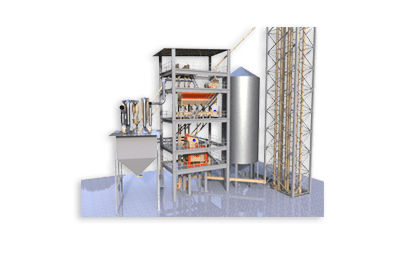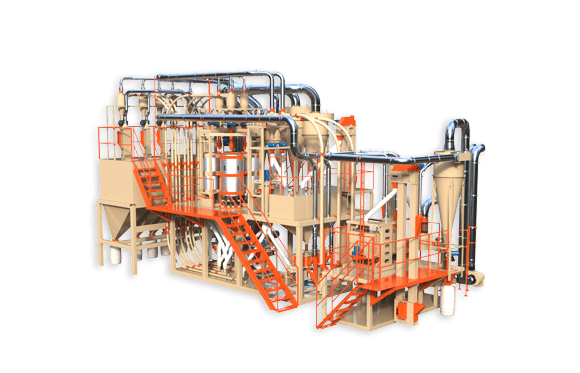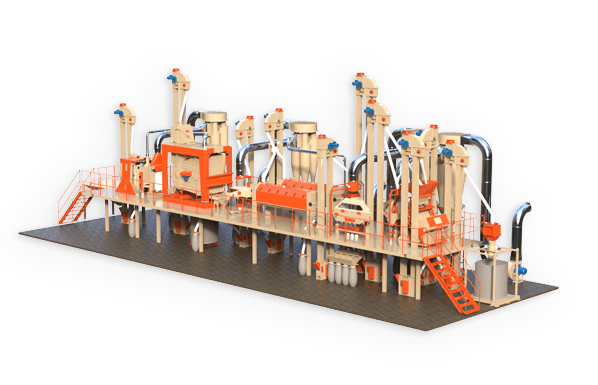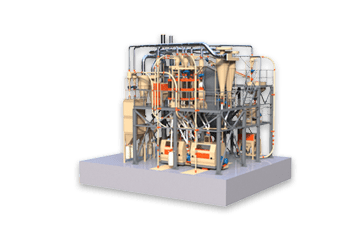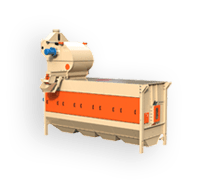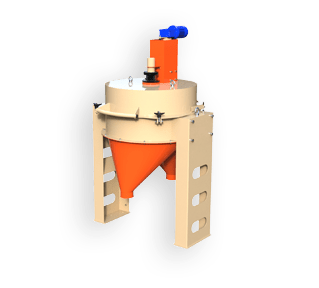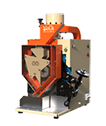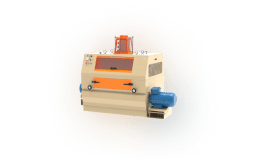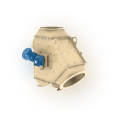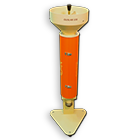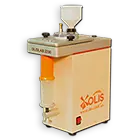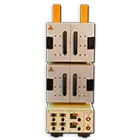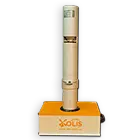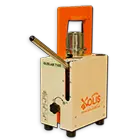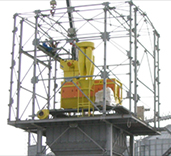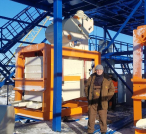New opportunities for improving mill productionusing the technological equipment of LLC “OLIS”.
Vereshchinsky A.P., Candidate of Technical Sciences, General Director of OLIS LLC.
An analysis of the technical solutions offered on the market shows that modern trends in the creation of new and reconstruction of existing mill production facilities are aimed at grinding grain according to a reduced structure. At the same time, fewer pieces of equipment and production space, electricity, air and other resources are required, which in total significantly reduces the costs of creating and operating such production facilities. Practitioners are well aware that attempts to reduce the grinding structure within the framework of traditional technological approaches and equipment necessarily entail a decrease in the quality and yield of the finished product. Therefore, the only way to ensure the efficiency of grinding while reducing its structure may be the development and implementation of new special technological fragments and machines that implement them. The success of this approach has been repeatedly confirmed by practice, including research and development work of our company. We are confident in the prospects of this area, which is the basis of our work. It should be noted that the implementation of effective grinding with a reduced structure in modern economic conditions exacerbates traditional requirements for the equipment being created and puts forward new ones.The need to reduce the fleet of used machines requires a significant increase in their technological efficiency, productivity, as well as the implementation of several technological operations within one machine. Reducing the number of similar equipment eliminates the need for them to support duplicate functions, which requires increased reliability of the machines used to avoid frequent emergency stops of the entire flour production process. The need to reduce the production area of buildings and the material intensity of building structures, in turn, requires a reduction in the dimensions and weight of machines, as well as a reduction in the dynamic loads they generate.
In this report, I will briefly present some types of equipment produced by our company, which opens up additional opportunities for the successful improvement of mill production.
It is known that the efficiency of grain cleaning predetermines the results of its further processing. To solve this problem, OLIS LLC produces a wide model range of LUCH ZSO brand separators for universal purposes, consisting of an air separator with closed or open cycle air and drum-type sieve separator. Such machines are capable of effectively solving the problems of post-harvest cleaning and purification of grain at elevators, as well as preparation for processing in mills and grain processing plants.
In an air separator, grain is cleaned by an ascending air flow. Light residues are separated centrifugally in the air purification chamber and removed from the machine by a screw. Exhaust air in separators with a closed cycle of the VSZ brand is supplied for subsequent use, and in separators with an open cycle of the VSN brand – for additional cleaning outside the separator and is released into the atmosphere.
In the ZSO sieve separator, the grain to be cleaned is fed into a rotating drum and moves from the inlet to its outlet under the influence of support and a slight inclination. When rolling over the sieve surface, the grain is sifted through the sieves. The part of the grain mass that did not pass through the sieve goes to the next sieve and is discharged at the end of the drum. For such an organization of sifting, vibrations of the working parts are not required. The fulfillment of sifting conditions is ensured only by rotating the drum around its axis at low speeds.Consequently, in sieve separators of the type under consideration, dynamic loads on the working parts, frame, and building structures are practically absent. Such separators are much simpler than other types of separators, more reliable, and can also be installed and assembled at much lower cost. It should be noted that, unlike flat sieves, the use of cylindrical sieve drums creates conditions for the use of simple, reliable and very effective means of cleaning sieves, which is the key to separation efficiency. The size range of screen separators under consideration includes machines with a significant screening surface area, which can be successfully used for fractionation operations, ensuring the required clarity and productivity in a mill or grain processing plant.
As is known, effective methods of preparing grain for grinding are surface treatment in beakers and peeling. In beakers, the surface of the grain is cleaned, and as a result of peeling, the ash content and strength of the grain, the content of impurities are reduced, and the prerequisites for effective conditioning are created. For these purposes, OLIS LLC produces MBO brand beading machines, MAO brand peeling and peeling machines and husking and grinding machines “Cascade”.
MBO brand machines, produced in two standard sizes with a capacity of up to 3 tons/hour and up to 6 tons/hour, are traditionally equipped with a whip rotor and a sieve shell. Their distinctive feature is the presence of brake bars in the working chamber, which enhance the effect on the grain. These machines are also equipped with a grain release device that regulates the degree of filling of the working chamber.
MAO brand machines, also produced in two standard sizes with a capacity of up to 3 tons/hour and up to 6 tons/hour, are equipped with a sieve shell and a rotor, the initial part of which contains whips along the grain path, and then abrasive wheels are installed. The whipping part of the machine is designed to clean the surface of the grain and remove impurities from the grain mass, and the abrasive part is designed to remove shells with peeling indices of up to 3%. The machines are equipped with a grain release device that regulates the degree of filling of the working chamber, and can also be equipped with two cones for collecting and discharging separated products. One of the cones is installed under the whip part, and the second – under the abrasive part, which provides the possibility of separate use for their intended purpose of separated products of different quality.
Peeling and grinding machines “Cascade” are produced in a wide range of models with a productivity of up to 3 tons/hour and are designed with a vertical abrasive rotor and a sieve shell. Despite the simplicity of the operating principle of machines of this type, ensuring effective peeling is associated with rather complex interactions between the abrasive rotor and the grain mass.The “Cascade” machine was created with maximum consideration of the features of such interactions, so its operation is characterized by high uniformity of grain surface treatment at any required peeling indices, at any point in the performance range, on grain with a moisture content of up to 17%. These advantages make it possible to use such machines for processing conditioned grain, ensuring a reduction in its ash content by 0.2-0.3%. In addition, “Cascade” machines are reliable, require a minimum of maintenance time, are capable of operating for a long time in established modes without settings and are controlled automatically by the mill’s automatic control system.
With the onset of the cold season, problems associated with a decrease in the quality and yield of flour become noticeable in many mills. The main reason for this decrease is the violation of the temperature conditions necessary for effective water-thermal processing of grain. In order to solve this problem, the water used for humidification is heated to a temperature of 60-70 degrees, which is undoubtedly a useful measure. However, due to the low flow rate required, even very hot water can warm the grain by no more than a few degrees. To fully solve the described problem, before moistening it is necessary to heat not only the water, but also the grain. The recommended grain heating temperature is 20-25 degrees.
To heat grain during conditioning, we have developed a heater of the PZ brand, which has been successfully implemented and operated in mills of various capacities for several years. The heater consists of a receiving cone, one or more heating sections and an outlet device. The heating section is a shaft-type structure with a rectangular cross-section of 1000x1000mm and a length of 2000mm. The heating element is made of straight pipe sections connected into a coil, the welded joints of which are located outside the shaft. The section body is equipped with hatches to provide access inside, as well as covers covering the joints of the heating pipes. The outlet device includes a design of outlet funnels that eliminates the formation of stagnant zones in the heating section, as well as a sluice feeder with a drive. All external heated elements of the heater are thermally insulated. Water is used as a coolant, which is heated in a boiler of any type and supplied through a heating element in a closed circuit. One heating section is designed for a capacity of 1500 kg/h. If it is necessary to increase productivity, the required number of sections are installed sequentially, arranging them vertically using flange connections.
The grain to be heated is fed into the receiving hopper and by gravity in a bound mode passes through the heating section, washing the pipes of the heating element. As a result of contact with a hot surface, the grain heats up.The grain is released from the apparatus through outlet funnels and a sluice feeder of the outlet device. To automatically adjust the filling of the heater with grain, level sensors are provided, connected to the control unit for the performance of the sluice feeder. To control the grain temperature, the heater is equipped with several electronic thermometers.
As operating practice shows, PZ grain heaters in the conditions of Ukraine and Russia, the use of the described grain heater allows the mill to operate in winter without reducing the quality and yield of flour. At the same time, even if an electric boiler is used and the grain is heated by 15 degrees, the electricity consumption is 8-10 kW per ton of processed grain.
As you know, along with roller machines, the basis of mill production is sieving. It is difficult to overestimate the advantages of a reliable, hermetic, easy-to-install and operate sifter with a large sifting area. We are confident that the sifters produced by our company meet these criteria. These are four-section cabinet-type sifters with a useful sifting surface of the sieve frames of each section of 4.55 square meters. The main feature of such sifters is the drive, where the housings of the sieving sections are mounted in pairs on two levers that oscillate in antiphase, and each lever is independently attached to a rigid frame with fiberglass hangers. Thus, the moving masses of the screen are absolutely mutually balanced, and the forces of the cyclic effects of the suspensions are mutually absorbed by the reaction of the frame. When the sieving machine operates, there are no dynamic loads on building structures, which, taking into account its weight (only 700 kg), allows this machine to be installed in almost any room on any floor without reinforcing load-bearing structures. The sifter requires a height of only 2.5 m to install and can be traditionally fixed to the upper floor slab or to a specially designed frame that is installed on the lower floor slab. The design of the sieve frames and trays, in which the tray for collecting the product through passage combines the function of the supporting surface of the inertial sieve cleaners, makes it possible to reduce their height to a minimum, and therefore the height of the section and the entire machine.The sieve frames are made of aluminum profiles, which allows the sieve fabric to be attached to them by gluing and ensures a long service life of the profile. To avoid problems during operation, special attention was paid to the tightness of the structure. The side seals of the frames and trays are made of a special brush material and are fixed in the guides of the section bodies. The end seals of the frames are made of natural felt. Diagrams of sieving sections are unified with standard diagrams, and can also be installed individually during manufacturing.
Thus, in comparison with analogues of an identical screening surface, the RMO-4 screen is characterized by a reduction in weight by 2.5 times, height by 1.5 times, and the absence of dynamic loads and debris during operation.
An ESM brand dismembrator is designed for additional grinding of intermediate products. Unlike the widely used entolator R3-BER, the dismembrator has a higher grinding capacity provided by its design. The dismembrator rotor is made in the form of a disk with several concentric rows of pins, between which there are rows of fixed pins attached to the machine body. To regulate the degree of grinding action, the dismembrator is equipped with a device for changing the rotor speed. The use of the ESM dismembrator as part of first-quality grinding systems makes it possible to reliably ensure flour extraction within 70%, with virtually no deterioration in its quality. Practice has proven the feasibility of using this machine, provided the rotor speed is reduced for grinding out shell products, even in a frayed process. Thus, the use of ESM dismembrators, which are not very expensive, can significantly reduce the turnover of products and the number of systems used, which leads to a reduction in the number of expensive equipment: roller machines and sieves.
In conclusion, on behalf of the team of our enterprise, I would like to welcome everyone who gathered for this wonderful event. We have many more interesting proposals and plans in the field of grain processing. I invite you to work together in scientific, research and practical terms. I wish you all success and prosperity.


